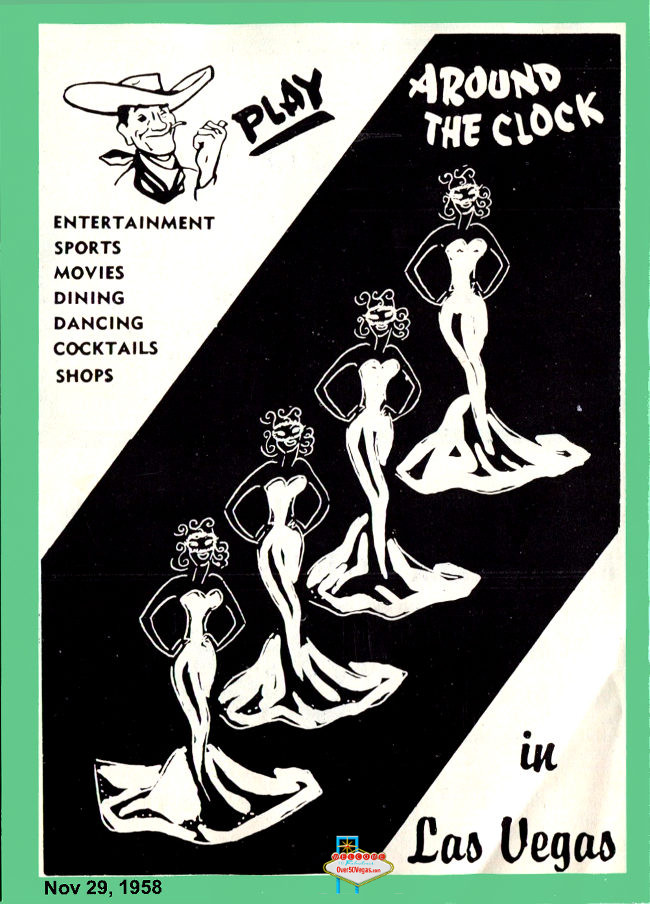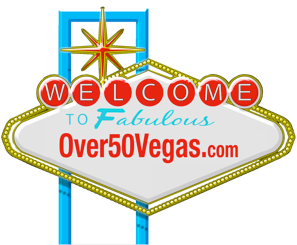- About Over50Vegas
- How did Las Vegas become Las Vegas?
- Observations by Charles "Pop" Squires- Las Vegas Pioneer and Publisher
- Books and References Sites
- Las Vegas Phonebook and City Directories of Bars, Casinos and Hospitality Properties
- Casino Collectible Shows & Local Meetings
- Visit the ChipGuide
- Visit the Museum of Gaming History
- Visit the Casino Chip & Gaming Token Collectors Club, Inc.
- Sitemap by name of property
- Sitemap by address of property
- Click here to request page update notifications
- Contact Over50Vegas
How did a little patch
of desert become
the entertainment capital of the world?
The beginnings of the city of Las Vegas combine a couple of familiar topics. Politics, money, and water.
Before the coming of the white man, the area we know today as Las Vegas had been inhabited for at least 10,000 years because of water.
First because it was a lush swampy area that was home to mammoths and other prehistoric mammals. Then as the rivers and swamps dried into an arid desert, early Native Americans found a home there in an oasis of spring water and vegetation. Later Mexican explorers “discovered” it and gave it the name Las Vegas, which means The Meadows.
As westward expansion grew during the 1800's there was a need for a reliable route from Salt Lake City to Los Angeles. Whether by wagon train or steam locomotive, a source of rest and water was needed along the route. Enter U.S. Senator William A. Clark. Senator Clark owned copper mines and needed to move his ore. The best way to do that was by rail. So Senator Clark bought a small railroad called the Los Angeles Terminal Railroad and renamed it the San Pedro, Los Angeles & Salt Lake Railroad.

This 1958 Las Vegas map shows
some early highlights.

In 1902 Senator Clark and his business partners bought 1800 acres and on May 15, 1905 began auctioning off both residential and commercial lots in what was then called the Clark Las Vegas Townsite. It is what we know today as downtown Las Vegas. The railroad and the railroad depot at Main and Fremont Street would put it's permanent mark on downtown Las Vegas. The depot would become a hub of the city and a major employer. It's popular restaurant, the Beanery, would be the precursor to restaurants today. Because railroad tracks don't move easily, development revolved around the railroad. Much of the geography and the original layout of the streets has stayed the same after over 100 years. Today the site of that depot is the Plaza Hotel and those tracks are still right behind it.
This is a very shortened version of the birth of a world renowned city. There are many great books about all of the machinations that went into it.
But the short version is:
money, politics, money, water, money, gambling, money, booze, money, money...

Over50Vegas.com by Over50Vegas.com is licensed under a Creative Commons Attribution-NonCommercial-NoDerivs 3.0 Unported License.
Based on a work at http://over50vegas.com/index.html.
This is a non-commercial, educational, hobby site. Images on this site are from our personal collection and from personal collections of fellow enthusiasts who have shared their scans with us. Other images are noted by source with links to the original. If you feel that any image used here has infringed upon fair use of an image you hold the copyright to, please contact us at the links above and it will be credited or removed at your request.
Sources you might want to visit for more information include:

Search for anything on this site. Click "Advanced" to narrow your search.
